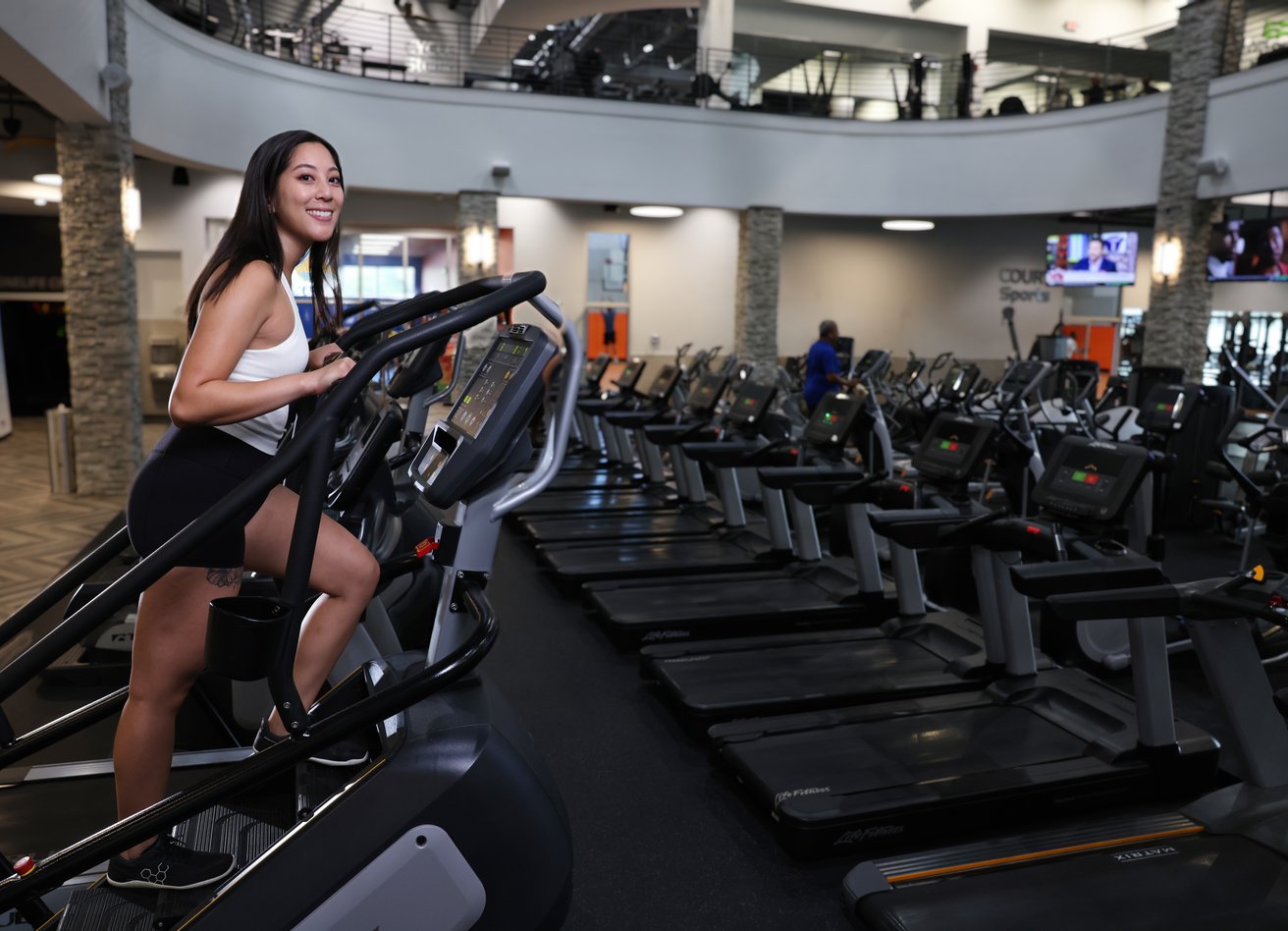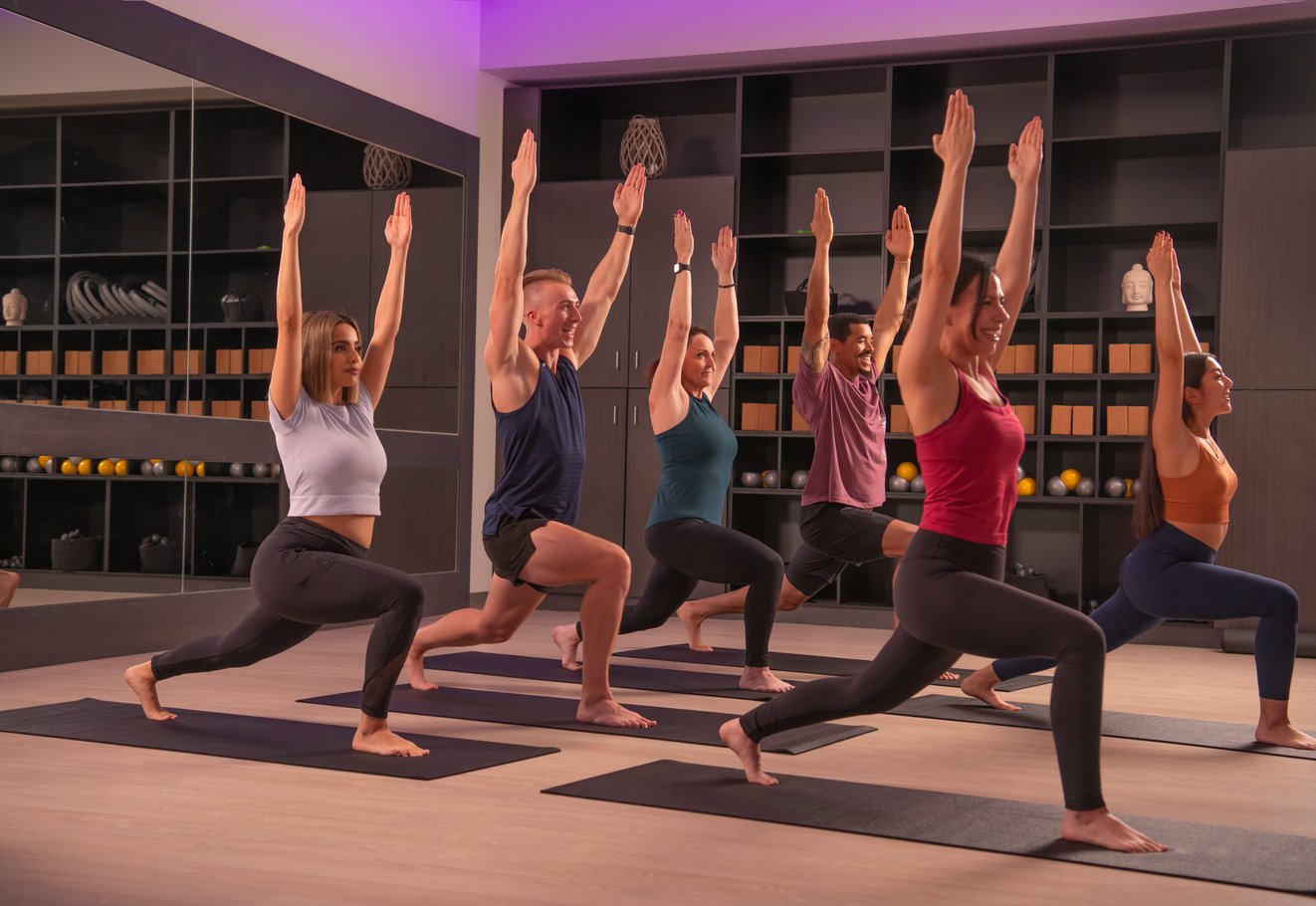The Ultimate Guide to Building a Fitness Workout Plan That Suits You
The Ultimate Guide to Building a Fitness Workout Plan That Suits You
The Ultimate Guide to Building a Workout Plan is your roadmap to fitness success.
Indeed, when it's time to take control of their health and wellness, many people's #1 challenge is...
Crafting an effective workout routine.
Many people don't understand how to begin. This knowledge gap separates the occasional gym-goer from the committed fitness enthusiast. But reaching your desired fitness level can seem impossible if you're unsure how to create a sustainable workout routine.
Making a great workout plan isn't easy.
Consider, for example, one individual who shared that they started with high-intensity workouts only...and ended up injured within weeks due to overexertion.
This person now fears going back into regular exercise routines and worries about ever achieving their health goals again
Understanding Your Fitness Goals
Achieving your fitness goals starts with understanding what they are. These can range from weight loss and muscle growth to improving endurance for everyday activities like lifting groceries or enhancing overall health.
Your workout plan should be tailored to these goals, influencing everything from your exercises during your training sessions to how often you hit the gym. It's important that these objectives align with both your lifestyle and personal interests for them to be sustainable long-term.
Different Types of Fitness Goals
Fitness goals vary greatly depending on individual needs and desires. Common ones include strength training aimed at developing specific muscle groups, cardiovascular workouts designed for heart health improvement, flexibility routines incorporated into a balanced program, or resistance training, primarily when aiming at fat-burning and building strength.
If choosing between all these options seems overwhelming, don't hesitate to seek advice from professional trainers at Onelife Fitness. With their broad expertise in helping a wide range of clients throughout the East Coast, Onelife Fitness's professional trainers can provide personalized advice.
Multitasking With Multiple Goals
You're not limited to just one goal. By incorporating various elements into a single workout routine, achieving multiple fitness targets simultaneously is possible. For example, combining cardio exercises alongside a strength-training regimen could help burn fat while building muscles effectively.
Variety keeps things interesting but also helps prevent overuse injuries caused by repetitive strain placed upon any particular muscle group too frequently. Read this Mayo Clinic Exercise Guide: How To Avoid Overuse Injuries.
The Timeline For Achieving Your Goal(s)
An essential part of the planning process involves setting a timeline for each target (strength and muscle gain vs. weight loss), ensuring constant progression toward achieving the initial results. This includes deciding how many days per week are dedicated to each specific target and monitoring progress regularly using the tools available at Onelife Fitness centers.
Analyze Your Fitness Level
Before you start building your workout program plan, it's important to understand where you currently stand regarding fitness. This analysis will help tailor your exercise routine and set realistic expectations.
Here are the steps you can take to assess your current level of physical fitness accurately:
1. Establish Your Starting Point
The first step is recognizing what stage of the fitness journey you're at: A beginner, intermediate, or advanced. Knowing this helps customize a suitable strength training routine for muscle growth that aligns with your capabilities.
To establish an accurate starting point, consider measuring basic parameters such as resting heart rate and post-exertion heart rate, flexibility range (can you touch your toes without bending your knees?), and stamina levels (how long can you jog continuously?), among others. These simple yet effective tests provide valuable insight into your present condition, which forms the basis for creating your personal 'before' snapshot.
2. Identify Physical Limitations for Training to Lose Weight
While analyzing fitness level, a key aspect involves identifying any potential physical limitations or health conditions that may impact certain types of exercises or workouts, like resistance training during weight loss programs, etc. If you have underlying health issues such as knee problems or chronic diseases like diabetes, consulting healthcare professionals before starting strenuous workout sessions becomes crucial.
This way, they would guide you about modifications required in the workout program, keeping safety paramount and ensuring that everyday activities like lifting groceries don't become a task due to their intensity.
3. Identify Strengths And Weaknesses
Fitness isn't only about burning fat fast but also about balance, agility, and coordination, among other aspects. Identifying strengths helps leverage them when planning workouts, whereas knowing weaknesses allows you to work specifically towards improving those areas.
To identify these objectively, consider taking professionally administered tests. However, always remember to perform them under expert supervision.
Create A Baseline For Progress Tracking
Capturing initial measurements provides insights into your present condition and serves as a reference point for future improvements, creating a personal 'before' snapshot.
Set Realistic Expectations

The journey towards achieving fitness goals is not a race but a steady climb. Setting expectations that align with your physical capabilities and lifestyle is essential. This strategy aids in maintaining motivation and muscular endurance throughout the workout program and avoids potential injuries due to overexertion.
Achievable Goals: The Cornerstone of Success
If weight loss is among your primary objectives, it's vital to comprehend that healthy weight loss typically occurs at 1-2 pounds per week, as the CDC indicates. Therefore, aiming to lose 20 pounds within one month would be unrealistic and potentially detrimental unless you are very heavy.
Making Your Fitness Targets Specific
Your fitness targets should be specific instead of vague or general. For instance, instead of merely stating, "I want to build muscle," aim for more precise targets like "My goal is increasing my bicep circumference by two inches within six months." Such specificity enables accurate progress tracking while designing an appropriate strength and training program and routine for these results.
Balancing Aspirations With Reality
Balancing aspirations with reality plays a key role in developing a workout plan. If everyday activities such as lifting groceries pose challenges due to a lack of strength training, jumping straight into heavy resistance workouts might lead to discouragement or injury. Starting gradually and incorporating flexibility exercises could improve endurance, helping you achieve desired outcomes without overwhelming yourself physically or mentally.
Scheduling Training Days Wisely
An important aspect when creating an effective workout split involves scheduling training days wisely so every single session doesn't strain any particular muscle group excessively, leading to prolonged recovery and hindering overall muscle growth.
Alternating between upper body exercises and lower body workouts across different days allows ample rest time, ensuring muscles recover well post-workout, promoting better growth eventually (source).
Create a Schedule

Designing an effective workout schedule is crucial in achieving your fitness goals. A well-planned routine helps you stick to the plan and ensures that each training session contributes towards reaching those objectives.
Determining Your Training Days
Determining the number of days you can dedicate to exercise is the initial step in creating an effective workout program. According to CDC guidelines, adults should aim for at least 150 minutes of moderate-intensity aerobic activity every week and muscle-strengthening activities on two or more days a week.
This could translate into three full-body workouts weekly or if time permits, five daily sessions focusing on different muscle groups. Choosing training days is essential based on your lifestyle and when you feel most energized and motivated.
Planning Your Workout Routines and Sessions
A comprehensive single workout typically includes strength training exercises to build muscles, cardio routines designed for burning fat and improving endurance, and flexibility exercises integral to any balanced exercise regimen.
You might begin with warm-up cardio, like brisk walking, followed by resistance-based strength-building exercises such as weight lifting, then conclude with stretching, making flexibility part of everyday activities easier over time, like lifting groceries, etc. Always remember though - always listen to what feels right for YOUR body.
Designating Your Workout Split
'Workout split' refers to dividing up these individual sessions throughout the week according to major muscle groups, e.g., legs one day, chest/back another, etc. This way, all areas get adequate rest between workouts, promoting optimal growth and recovery while keeping things interesting and varied. Suppose your goal is general fitness improvement or weight loss. In that case, full-body routines may be beneficial since they engage multiple muscles simultaneously, leading to increased calorie burn during and after the workout.
On the other hand, if your primary objective is specific development, e.g., building strength/muscle size, focused splits targeting the same muscles or specific regions would likely prove advantageous due to their ability to concentrate intensity and volume toward singular targets, yielding greater muscle mass.
Choosing the Right Exercises for Your Workout Routine

The selection of exercises in your workout routine plays a significant role in determining their effectiveness. These exercises should be carefully chosen based on your fitness goals, from weight loss and muscle growth to improving endurance.
A crucial aspect that needs consideration is how these exercise routines align with everyday activities like lifting groceries or climbing stairs. By focusing on such practical movements, you can ensure that your training sessions are not just about building strength but also enhancing functionality.
Fitness Goals Dictate Exercise Selection - Strength Training vs. Cardio
Your choice of workouts largely depends on what you aim to achieve through them. For instance, cardio-based workouts might be effective if burning fat is high on your priority list. On the other hand, those seeking muscle growth could benefit significantly from resistance training that occurs regularly within their workout program.
This approach helps target specific muscle groups during single workout sessions and compound exercises, leading to targeted muscle development and improving overall health.
Incorporating American Recommended Strengthening Exercises
The ACSM has underlined the significance of strengthening exercises in an individual's routine. Their recommendations involve moderate-intensity aerobic activity for 30 minutes daily, five days weekly, totaling 150 minutes weekly.
Additionally, they advise adults to undertake resistance/weight-bearing activities at least twice every week. This type of strength training promotes bone density maintenance while encouraging fat-free mass production, thereby aiding efficient fat burn.
Making Flexibility A Part Of Routine
Besides muscular strength and endurance, flexibility is also paramount in physical well-being. Improved mobility aids performance across various forms of physical activity, including our regular training sessions. Thus, integrating flexibility-enhancing practices like yoga and stretching for pre- and post-session warm-ups and cool-downs would further boost results.
Remember: the progress rate varies from person to person. Hence patience coupled with consistency usually yields the best outcomes eventually.
Monitor Your Fitness Plan Progress
The key to achieving your fitness goals lies in regularly monitoring your progress. This progress tracking is necessary to keep your workout plan on target and ensure it remains demanding and useful.
Why Monitoring Matters?
Logging the particulars of each exercise session is an essential part of any successful fitness program. It helps you maintain accountability towards yourself and provides valuable insights into what's working for you regarding strength training or cardio activities.
A well-kept exercise log is also a crucial reference point for future workouts. Reviewing this data over time, you can identify patterns leading to success or areas needing improvement.
Different Methods To Monitor Progress - Muscle Growth, Strength Changes, Weight Changes and More
You have several options regarding tracking methods - traditional pen-and-paper logs are still popular among many people. In contrast, others prefer digital tools like MyFitnessPal, which allow easy logging from anywhere with internet access.
In addition, body measurements or photos provide visual evidence of changes over time, making them another great way to monitor progress, especially if one aims for muscle growth or weight loss through resistance training.
Making Use Of Data Collected
Data collected should be actively used in shaping plans and analyzing trends observed so far. Whether burning fat was the goal but hasn't been achieved yet, then maybe intensity needs increasing or diet requires adjustment? Remember, the ultimate guide here isn't about blindly following a set path but continuously evolving based on the results obtained. Thus, flexibility exercises become an integral aspect of the strength training routine.
Adjusting Workout Plans Based On Feedback From Monitoring
To build muscle effectively, sometimes adjustments need to be made according to feedback received through the regular monitoring process. If a certain muscle group seems lagging behind others, consider adding an extra "isolation exercises" workout focused solely on improving its performance in the next week's schedule.
- Create specific, measurable objectives related to each goal (e.g., "Increase bench press weight by five pounds" rather than "Get stronger").
- Schedule periodic reviews to evaluate
Adjust as Needed: Keeping Your Workout Plan Effective
Your best workout routine or plan is not a static document. It's a dynamic, evolving guide that should change and grow with you. Adjusting your routine ensures it remains challenging, effective, and aligned with your fitness goals.
1. The Need for Regular Reevaluation
A key component of any successful exercise program involves regular reevaluations of the effectiveness of your current regimen. This allows you to assess whether the exercises in your strength training routine still contribute to muscle growth or weight loss.
If an aspect isn't aiding in achieving results anymore - because resistance training on machines has become too easy - then it might be time for some changes. Healthline offers great insights about this topic.
2. Implementing Necessary Changes
Making necessary alterations could involve several things like changing up the type of exercises performed (from machine-based workouts to free weights), increasing intensity (adding more weight or reps), modifying frequency (altering the number of training days per week), or varying the duration each single workout session lasts.
You may also consider trying different types, such as HIIT, if endurance improvement and compound and isolation exercises were previously achieved through steady-state cardio, which is ideal for burning fat faster.
Note:
Remember, everyone's body responds differently based on genetics, and lifestyle habits, among other variables. Therefore, patience is crucial during the adjustment phases. Always consult professionals before implementing drastic changes, especially if you are new to the fitness world.
Incorporating Flexibility Exercises Into Routine
Beyond building lean muscle mass and losing weight, flexibility is essential in maintaining optimal physical health. The American Heart Association recommends making flexibility exercises part of everyday activities, like lifting groceries from ground-level store shelves.
FAQs- How to Create a Gym Workout Plan
How to design an effective workout plan ultimate guide for beginners?
Beginners should start by understanding their fitness goals, assessing their current fitness level, setting realistic expectations, creating a schedule, choosing the right exercises, monitoring progress, and adjusting as needed.
What are the 7 steps to creating a workout plan?
The seven steps include understanding your goals, analyzing your fitness level, setting realistic expectations, developing a schedule that fits your lifestyle and allows rest days, selecting suitable exercises for you, and tracking & adjusting your progress.
How do you structure an effective workout plan?
An effective workout plan is structured around an individual's specific goals. It includes warm-up sessions before workouts, strength training or cardio activities, cool-down periods after workouts, and flexibility and balance exercises on some days.
What are the 6 components of an effective workout plan?
Six key components of an efficient exercise regimen encompass cardiovascular endurance training, strength-building activities, flexibility drills, balance tasks for injury prevention, regularity in exercising with appropriate intensity levels, and nutrition plans complementing physical efforts.
Conclusion
So, you've journeyed through our Ultimate Guide to Building a Workout Plan. You're now equipped with the knowledge to understand your fitness goals and analyze your current level.
You must remember to be realistic with yourself when setting goals.
We walked you through creating a perfect workout routine and schedule that fits seamlessly into your lifestyle. We also delved into choosing the right exercises targeting the specific muscles you want to work on.
What is the importance of monitoring progress? Covered. The need for adjustments in your plan as needed? Also covered.
With this guide, we hope you feel confident and ready to embark on your fitness journey with a plan that fits you perfectly! Remember, consistency is key, and every step forward counts!
Now apply these principles, and start building a custom workout program and plan tailored just for you!
Contact Onelife Fitness for all your fitness questions and gym classes across GA, MD, VA, DC & WV. We look forward to helping you on your health and fitness journey!